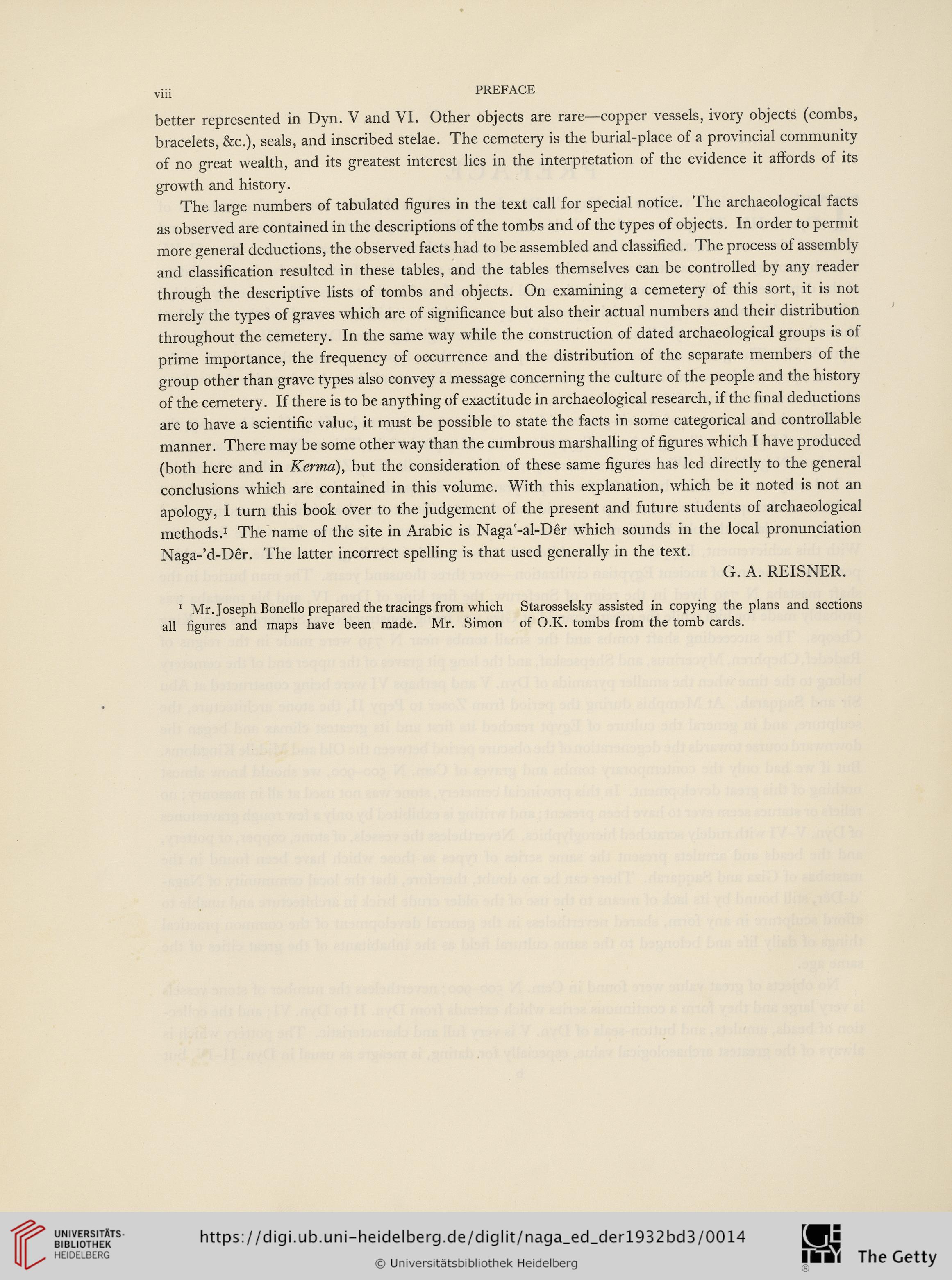viii
PREFACE
better represented in Dyn. V and VI. Other objects are rare—copper vessels, ivory objects (combs,
bracelets, &c.), seals, and inscribed stelae. The cemetery is the burial-place of a provincial community
of no great wealth, and its greatest interest lies in the interpretation of the evidence it affords of its
growth and history.
The large numbers of tabulated figures in the text call for special notice. The archaeological facts
as observed are contained in the descriptions of the tombs and of the types of objects. In order to permit
more general deductions, the observed facts had to be assembled and classified. The process of assembly
and classification resulted in these tables, and the tables themselves can be controlled by any reader
through the descriptive lists of tombs and objects. On examining a cemetery of this sort, it is not
merely the types of graves which are of significance but also their actual numbers and their distribution
throughout the cemetery. In the same way while the construction of dated archaeological groups is of
prime importance, the frequency of occurrence and the distribution of the separate members of the
group other than grave types also convey a message concerning the culture of the people and the history
of the cemetery. If there is to be anything of exactitude in archaeological research, if the final deductions
are to have a scientific value, it must be possible to state the facts in some categorical and controllable
manner. There may be some other way than the cumbrous marshalling of figures which I have produced
(both here and in Kerma), but the consideration of these same figures has led directly to the general
conclusions which are contained in this volume. With this explanation, which be it noted is not an
apology, I turn this book over to the judgement of the present and future students of archaeological
methods.1 The name of the site in Arabic is Naga'-al-Der which sounds in the local pronunciation
Naga-’d-Der. The latter incorrect spelling is that used generally in the text.
G. A. REISNER.
1 Mr. Joseph Bonello prepared the tracings from which Starosselsky assisted in copying the plans and sections
all figures and maps have been made. Mr. Simon of O.K. tombs from the tomb cards.
PREFACE
better represented in Dyn. V and VI. Other objects are rare—copper vessels, ivory objects (combs,
bracelets, &c.), seals, and inscribed stelae. The cemetery is the burial-place of a provincial community
of no great wealth, and its greatest interest lies in the interpretation of the evidence it affords of its
growth and history.
The large numbers of tabulated figures in the text call for special notice. The archaeological facts
as observed are contained in the descriptions of the tombs and of the types of objects. In order to permit
more general deductions, the observed facts had to be assembled and classified. The process of assembly
and classification resulted in these tables, and the tables themselves can be controlled by any reader
through the descriptive lists of tombs and objects. On examining a cemetery of this sort, it is not
merely the types of graves which are of significance but also their actual numbers and their distribution
throughout the cemetery. In the same way while the construction of dated archaeological groups is of
prime importance, the frequency of occurrence and the distribution of the separate members of the
group other than grave types also convey a message concerning the culture of the people and the history
of the cemetery. If there is to be anything of exactitude in archaeological research, if the final deductions
are to have a scientific value, it must be possible to state the facts in some categorical and controllable
manner. There may be some other way than the cumbrous marshalling of figures which I have produced
(both here and in Kerma), but the consideration of these same figures has led directly to the general
conclusions which are contained in this volume. With this explanation, which be it noted is not an
apology, I turn this book over to the judgement of the present and future students of archaeological
methods.1 The name of the site in Arabic is Naga'-al-Der which sounds in the local pronunciation
Naga-’d-Der. The latter incorrect spelling is that used generally in the text.
G. A. REISNER.
1 Mr. Joseph Bonello prepared the tracings from which Starosselsky assisted in copying the plans and sections
all figures and maps have been made. Mr. Simon of O.K. tombs from the tomb cards.




